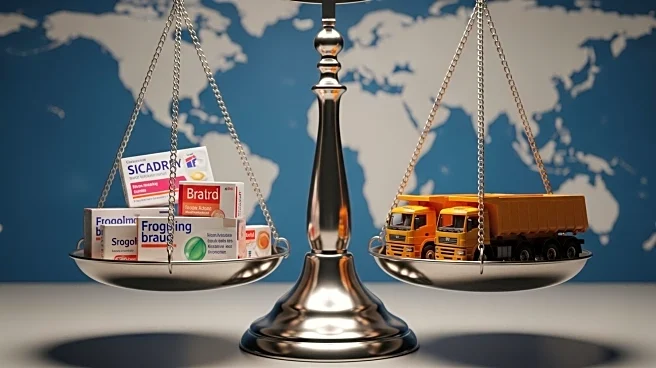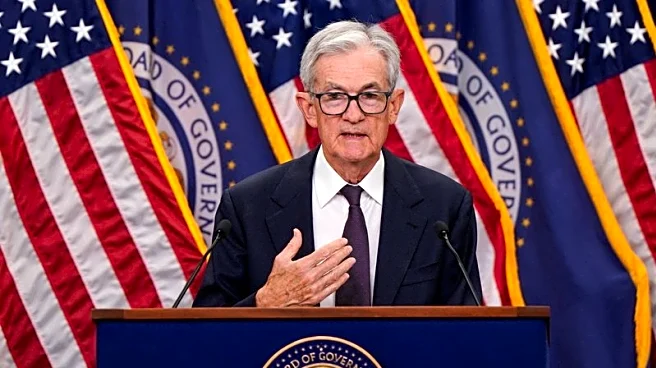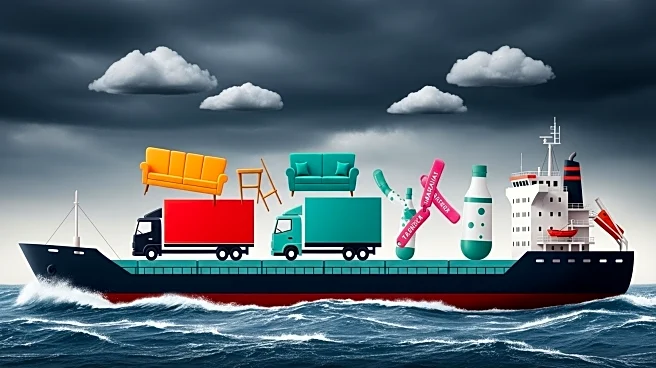What is the story about?
What's Happening?
President Trump has announced a new set of tariffs targeting branded drugs, heavy-duty trucks, and furniture, which are set to take effect next week. This move comes amid ongoing trade tensions and is part of the administration's broader strategy to address trade imbalances. The announcement coincides with economic data showing that the U.S. Personal Consumption Expenditures index was in line with expectations, which has led to increased speculation that the Federal Reserve might lower interest rates further this year. The tariffs are expected to impact various sectors, including pharmaceuticals and automotive industries, potentially leading to increased costs for consumers and businesses.
Why It's Important?
The introduction of new tariffs by President Trump is significant as it could have wide-ranging effects on the U.S. economy and international trade relations. The pharmaceutical and automotive industries, in particular, may face increased production costs, which could be passed on to consumers in the form of higher prices. This move could also strain trade relations with countries that export these goods to the U.S., potentially leading to retaliatory measures. Additionally, the timing of the tariffs, alongside economic indicators suggesting potential interest rate cuts, highlights the complex interplay between trade policy and monetary policy in shaping economic outcomes.
What's Next?
As the tariffs are set to take effect next week, businesses in the affected sectors will need to assess their supply chains and pricing strategies to mitigate potential impacts. There may also be responses from international trade partners, which could include negotiations or retaliatory tariffs. The Federal Reserve's upcoming decisions on interest rates will be closely watched, as they could influence economic conditions further. Stakeholders, including industry groups and policymakers, are likely to engage in discussions to address the implications of these tariffs and explore potential adjustments to trade policies.
AI Generated Content
Do you find this article useful?














